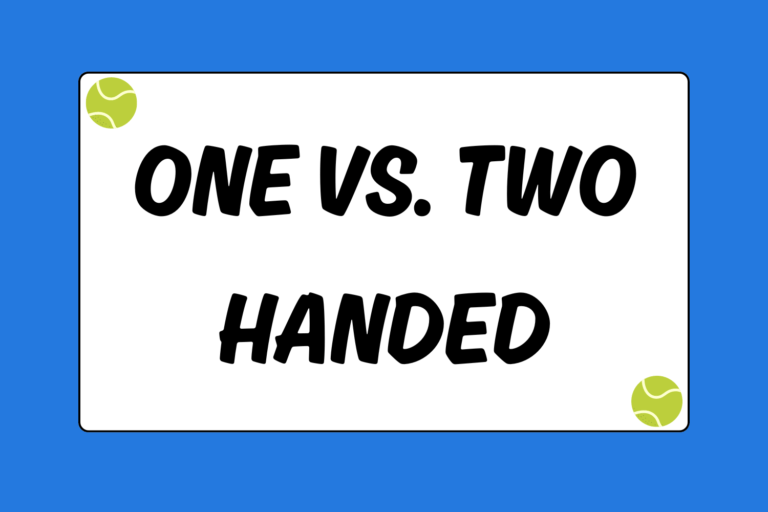Many players spend weeks researching and demoing new tennis racquets, scrutinizing every prospect with a cautious eye. Players take into account various factors, like which racquet complements their style of play, falls into their price range, or matches their favorite tennis outfit. During the selection process, however, the type of tennis string is often (and unwisely) ignored.
Although tennis strings may be easily overlooked, there are a multitude of brands, materials, colors, and gauges to choose from. Your strings constantly make contact with the ball, so it’s important to understand the physical attributes of different strings.
This guide focuses on the two most common tennis strings: Natural gut and synthetic.
Natural Gut
Since the 1800s, natural gut strings have reigned over the tennis world. Most professionals prefer natural gut, and tennis manufacturers continually release synthetic strings that allegedly “play like gut.”
Natural gut strings have great elasticity, hit with power, and reduce shock. Even at high tensions, natural gut plays softer than synthetic strings. As a result, a racquet strung with natural gut places less stress on your arm, while also giving the racquet a better “feel.” Because of its elasticity, the ball stays on the string bed for a longer period of time – giving players a better sense of control over the ball.
Manufacturers have improved the durability and quality of natural gut strings. Even though they tend to snap earlier than some synthetic materials, natural gut strings are good for any type of player or environment. Resilient during cold and wet weather, even powerful baseliners should find these strings to be durable.
But, perhaps the most peculiar characteristic of natural gut strings is its bizarre name. Believe it or not, natural gut strings come from cow intestines. The outermost layer of a cow’s intestines, called the serosa, is very flexible and strong, making it ideal for tennis racquets.
Fun Fact:
Some manufacturers believe that cows raised in climates with lush pastures produce better natural gut strings. Cows that feed in pastures often eat rocks and dirt, which strengthens their intestinal linings. Manufacturers order their serosa from specific regions, and only sell natural gut that matches their standards.
Synthetic
Synthetic strings are manufactured to recreate the feel and playability of natural gut strings. However, there are a few, distinct advantages to certain synthetic materials.
Nylon
Nylon is the most widespread type of string, partly because it’s inexpensive, yet durable. The string is made of a nylon core, surrounded by resistant wraps that increase tension. In general, high-quality nylon strings have more layers of wrapping than single-wrap nylon strings. Nylon is great for players who tend to break strings at a normal to high rate.
Polyester
Polyester is a durable fiber with a thin coating, and is best for players who tend to break strings more frequently. Compared to other synthetic materials, polyester is very firm and difficult to snap. Polyester generates more topspin than other strings because they don’t slide around during contact with the ball. Many professional players have a high preference for polyester strings because of its ability to generate huge amounts of topspin.
Multifilament Strings
In the ever-continuing search for the “next” natural gut, manufacturers created multifilament strings. Multifilament strings are made from an array of microfibers that are twisted together around a string and wrapped with a durable cover. They have high elasticity and play similar to natural gut. However, multifilament strings tend to break quickly because the outer wrap damages easily, causing the string to fray. Additionally, due to the complex design and manufacturing process, multifilament strings are expensive.
Kevlar
Kevlar is the strongest, stiffest, and most durable synthetic string on the market. Although it’s extremely hard to break, it can wreak havoc on your elbow and arm due to its inflexibility. Many manufacturers combine softer synthetic materials, like nylon, with Kevlar to decrease its stiff feeling. Some players use extremely thin Kevlar stringing to increase playability, but even then it’s very taut. Other Kevlar enthusiasts string their racquets with very low tension to counteract its stiffness.
King of the Strings
The type of string you use not only affects your performance on the court, but it affects your health as well. Sample a variety of strings before you make a decision, and choose a string that caters to your needs and abilities. Most players overlook the wide variety of strings, so simply learning about common tennis strings puts you a step ahead of the game.





